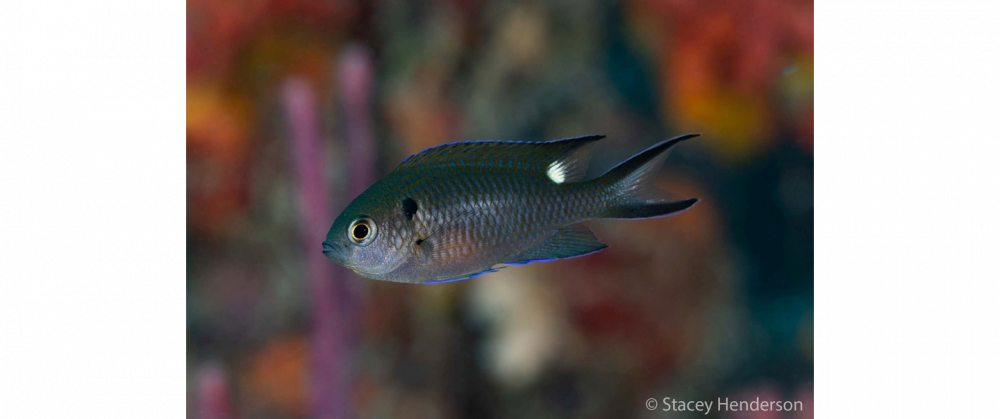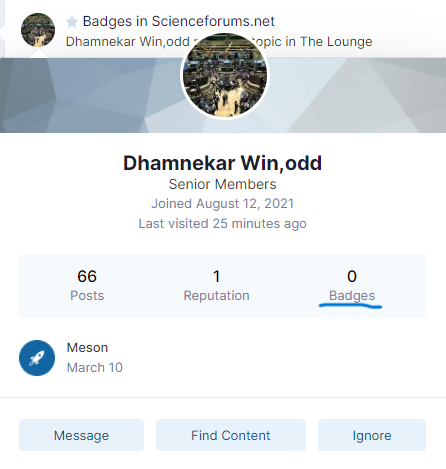-
Posts
5374 -
Joined
-
Days Won
52
Content Type
Profiles
Forums
Events
Everything posted by Genady
-

When does the permanent magnet begin to accelerate?
Genady replied to zetetic56's topic in Classical Physics
I think, after a delay of (distance between them) / (speed of light). -
The approach above should give you the max(f())=ln(n) quite fast. To get min(f), assume that ln(xj) is the smallest of all ln(xi), take the condition x1+x2+... xn = 1, multiply it by -ln(xj): -(x1+x2+... xn)*ln(xj)=-ln(xj). Because all ln(xi)>=ln(xj), -(x1*ln(x1)+...+xn*ln(xn))>=-ln(xj). The left side is -ln(x1^x1*x2^x2*... xn^xn), the right side -ln(xj)>=0. Thus -ln(x1^x1*x2^x2*... xn^xn)>=0. And we know how to get it =0. Thus 0 is the minimum.
-
Thermodynamic equilibrium is a probabilistic phenomenon. There is a VERY small probability of a VERY RARE arrangement of constituents particles. This probability is not 0 though, so if we wait THAT long, it will perhaps happen.
-
I guess I'm missing something. Are we talking about strings of random digits or sets of random digits?
-
I'd start with simplifying the expression and then finding an extremum using Lagrange multiplier method.
-
I don't think your answer to a) is correct. On one hand, your formula for the case of 5 random digits doesn't make sense to me because it has k in it. On the other hand, the "general terms" answer, (9/10)k has no justification. If the a) is indeed incorrect, the rest follows.
-
It gets a min when one xi=1 and all others are 0. It gets a max when all xi are equal.
-
Isn't it rather d=1/2*a*t^2+v*t ?
-
I don't know about the normal approximation in this case, but Excel has HYPGEOMDIST() function...
-

The myth of invasive lionfish
Genady replied to Genady's topic in Evolution, Morphology and Exobiology
Not a lionfish, but a different invasive fish from the Pacific appeared recently in the Tropical Western Atlantic (TWA) region. Just got this notification: Regal Demoiselle, /Neopomacentrus cyanomos/, a damselfish native to the Indo-Pacific and Red Sea. Experts think that this species was introduced into the TWA by hitchhiking on relocated oil and gas platforms. It was first reported in the Gulf of Mexico in 2016, and recent reports show that it has expanded its non-native range to southeast Florida. The species was reported in the Florida Keys in 2020 and has since moved up Florida's east coast to Blue Heron Bridge near West Palm Beach... Some experts believe that the Regal Demoiselle has the potential to place mild competitive pressure on native fishes, and it is important to track the spread of the Regal Demoiselle to understand the impacts it may have on native species and habitats. Regal Demoiselle Identification Similar in appearance to the native Brown Chromis, the Regal Demoiselle is distinguished by a yellow or white spot at the rear base of the dorsal fin, a dark spot behind the gill cover, and yellow or pale rear margins on the fins and tail. In contrast, the Brown Chromis is identified by dark margins on the tail and a dark spot at the base of the pectoral fin. For more information about the Regal Demoiselle, check out this page The Nonnative Regal Demoiselle | Reef Environmental Education Foundation , which also includes a helpful table showing how to tell the difference between it and the native Brown Chromis. -
According to reports, it didn't take long for them to get sick. I don't know how much Russian army has changed since it was Soviet army, but back then, when I was two months in military training, the officers were drunk most of the time.
-
Right. We're seeing it at a record redshift, 6.2. The previous record was redshift of 1.5. When its light left it it was 4 billion light years away. 4 x (6.2+1) = about 28 billion light years away "now". "Now" in cosmology means usually time in comoving reference frame. It can be measured independently at any location in the universe by measuring the CMB temperature, for example.
-

Physicists create compressible optical quantum gas
Genady replied to beecee's topic in Quantum Theory
I don't think the pressure disappears. It rather stops increasing after some density is achieved. So after that you can keep compressing it without pushing any harder. -
-
Doesn't matter. It might be not interesting to some, but it was interesting to me.
-
They did "post something interesting..."
-
They did.
-

Physicists create compressible optical quantum gas
Genady replied to beecee's topic in Quantum Theory
Thanks. So, it is just the increasing pressure. I think what confused me was that they didn't mention pressure, only compression. -

Physicists create compressible optical quantum gas
Genady replied to beecee's topic in Quantum Theory
Actually, not "more", and "higher energy" but not "higher levels". They occupy the same energy level numbers, but as the available space gets smaller, the separation between the levels gets larger, i.e. the same n-th level has a higher energy. This is how I understand it qualitatively. -

Physicists create compressible optical quantum gas
Genady replied to beecee's topic in Quantum Theory
I think this is right. The energy of squeezing goes into pushing neutrons to occupy more and higher energy levels. But, back to the OP, why would the photons resist compression?



